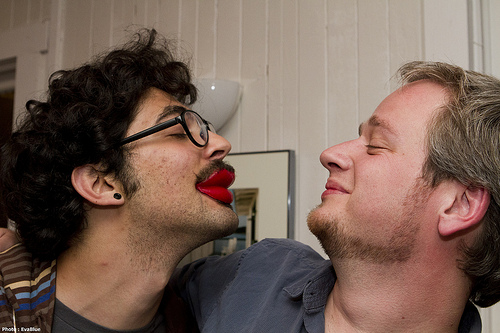
![]()
![]() Some rights reserved by HappyTramp87
Some rights reserved by HappyTramp87
I keep having a similar conversation with early stage entrepreneurs about fundraising and valuation. “Do you think a $1.5MM valuation is good?” “How much should I be raising?’ Well, it depends.
I’m finding more and more, the conversation about valuation is one that resembles not being able to see the forest because of the trees. Early stage entrepreneurs tend to fixate on valuation and assume product is the biggest risk at the seed stage thus defining product launch metrics as key metrics. Often, valuation and risk mitigation are tied together. And the milestones or traction metrics required to mitigate risk can help establish valuation.
Valuation
Fortunately, valuation is a topic that others have covered. Nivi and Naval, on VentureHacks, have provided incredible insight into early stage fundraising over the past 5 or 6 years. The advice is often summarized, “as much as possible is especially wise for founders who aren’t experienced at developing and executing operating plans”. The translation means that founders see rounds of seed stage companies raising $4.2MM at what must be a huge valuation.
“‘As much as possible while keeping your dilution under 20%, preferably under 15%, and, even better, under 10%.’ ” – Nivi
You can make some basic assumptions about the valuation. Most seed stage companies should be looking keep dilution in the 15-20% range. The specifics will be determined in fundraising but you can start to do some back of the napkin estimates:
You start to see a range for how much a company will raise at what valuation. The numbers aren’t set in stone but they provide a framework for estimating the amount valuation. As Nivi points out the difference between a seed round and “a Series A which might have 30%-55% dilution. (20%-40% of the dilution goes to investors and 10%-15% goes to the option pool)”. The more you raise early, the more dilution you can expect. The goal becomes managing the different risks associated with startup. You also see why raising debt early, which allows companies and entrepreneurs to delay valuation until certain accretive milestones, is attractive.
“The worst thing a seed-stage company can do is raise too little money and only reach part way to a milestone.” – Chris Dixon
So given the back of the napkin dilution terms, what are the milestones that you will need to hit in order to raise the next round.
Raising the next round
So you’ve raised a round, how much should you raise at the next round?
I like the rule of thumb that Chris Dixon uses. “I would say a successful Series A is one where good VCs invest at a pre-money that is at least twice the post-money of the seed round.” The expectation is that companies are roughly going to double their valuation at each raise. This isn’t to say that a 2x increase in value is your target, it’s the minimum, the floor. The art of raising a round it to raise enough money to get to a significant milestone, and not too much money taking too much dilution too soon. So how do you define the milestones. The milestones
“partly determined by market conditions and partly by the nature of your startup. Knowing market conditions means knowing which VCs are currently aggressively investing, at what valuations, in what sectors, and how various milestones are being perceived.” – Chris Dixon
So part of the market conditions, i.e., raising money in Canada is different than raising money than in Silicon Valley, New York , Tel Aviv. You are measured against your peers, and this might be defined by geography of the company or the VC. Being connected with other companies, advisors and investors can help provide insight in to the fundraising environment. The second part is determined by the nature of your startup, but generally expressed as measures of traction. We’ve talked a lot about getting traction and what traction looks like to a VC.
“The biggest mistake founders make is thinking that building a product by itself will be perceived as an accretive milestone. Building a product is only accretive in cases where there is significant technical risk – e.g. you are building a new search engine or semiconductor.” Chris Dixon
Entrepreneurs tend to focus on the product early. This is usually because the product is something that entrepreneurs can directly affect. But the product risk, is may not be the biggest risk that entrepreneurs need to mitigate early. The trick is figuring out which risk you need to eliminate to satisfy potential investors. And you can try to figure this out yourself, but I like to see entrepreneurs engage investors and other founders to get their opinion. The discussion usually is a combination of what other startups are seeing in the market place as milestones from investors (yay, market place data). Then you can work backwards the necessary resources and burn rate to reach those milestones.
Thoughts?
Additional Reading
- How do we set a valuation for a seed round? – VentureHacks
- How much seed money should I raise? – VentureHacks
- What’s the right amount of seed money to raise? – Chris Dixon
- What are the benefits of debt in a seed round? – VentureHacks
- Getting traction – StartupNorth
- Call us when you have traction – StartupNorth
- Different types of risk – Chris Dixon



